Over the winter I was listening to The Land of Desire, which has some fantastic food episodes, looking at my bookshelf and thinking the one major world cuisine I really hadn’t covered yet was French.
And slow braised stews in the dead of winter sounds like a great idea.
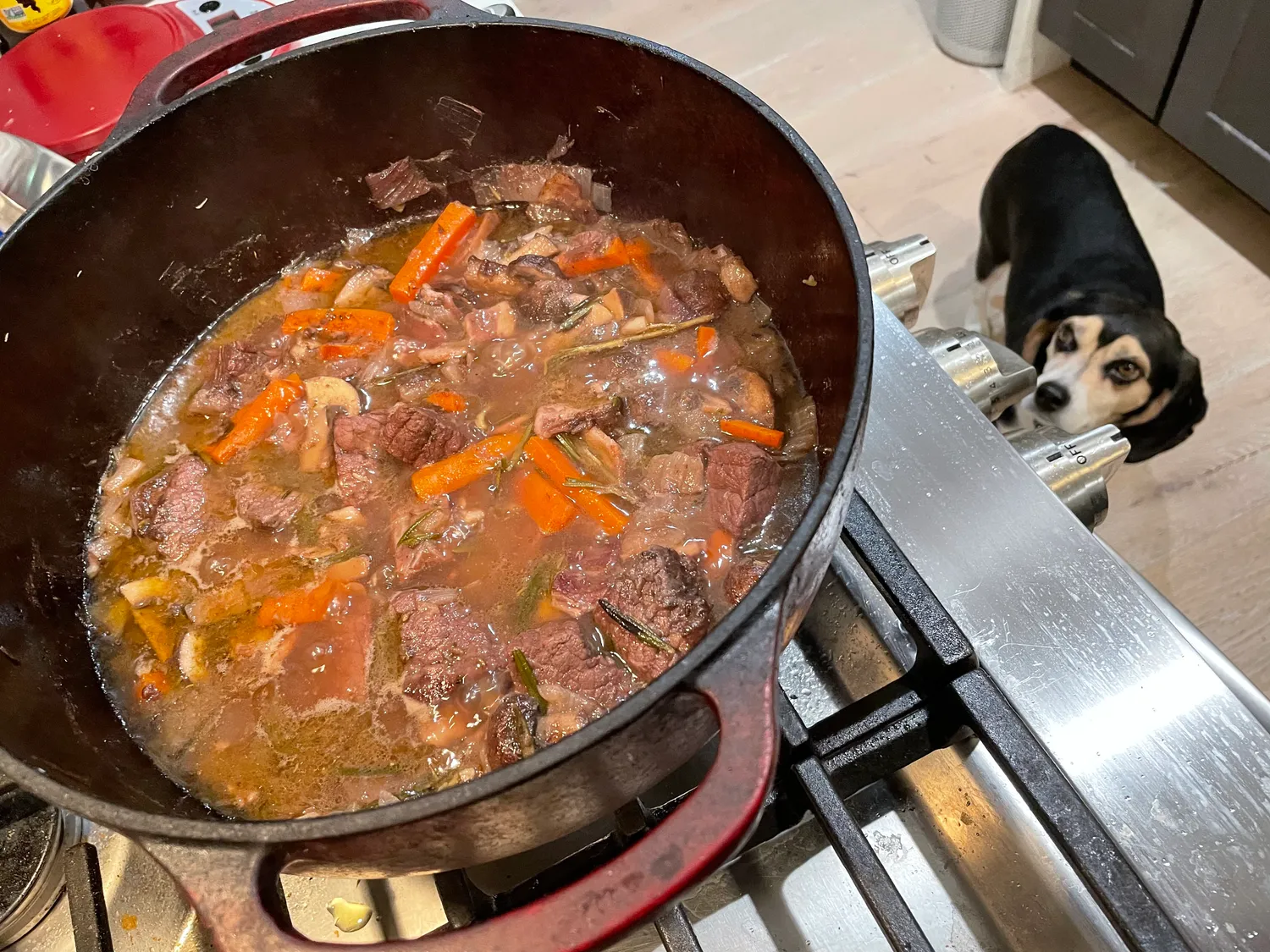
I’d taken a tourist cooking class in Paris that I would describe as “fine”—it was fun but it didn’t expand our repertoire the way paella or pasta-making had.
To complicate matters, the French do this thing where they deliberately raise the barrier to entry. The language? It’s supposed to be hard. The bread? It’s not enough to be the best in the world, I’m convinced bakers spent generations outdoing each other to create the most technically difficult product. The wine? How dare you show up to a casual tasting without memorizing all the regions and varietals.
The challenge is the point.
But it’s also true that peasant food and its bistro derivatives have unfussy, everyman origins.
I’m not going to master the mother sauces and there will be no snails in the kitchen, but maybe I can work my way through a small collection of approachable classics.
This a catchall post. None of these recipes belong to me, so it’s going to be all photos.
Roast Lamb
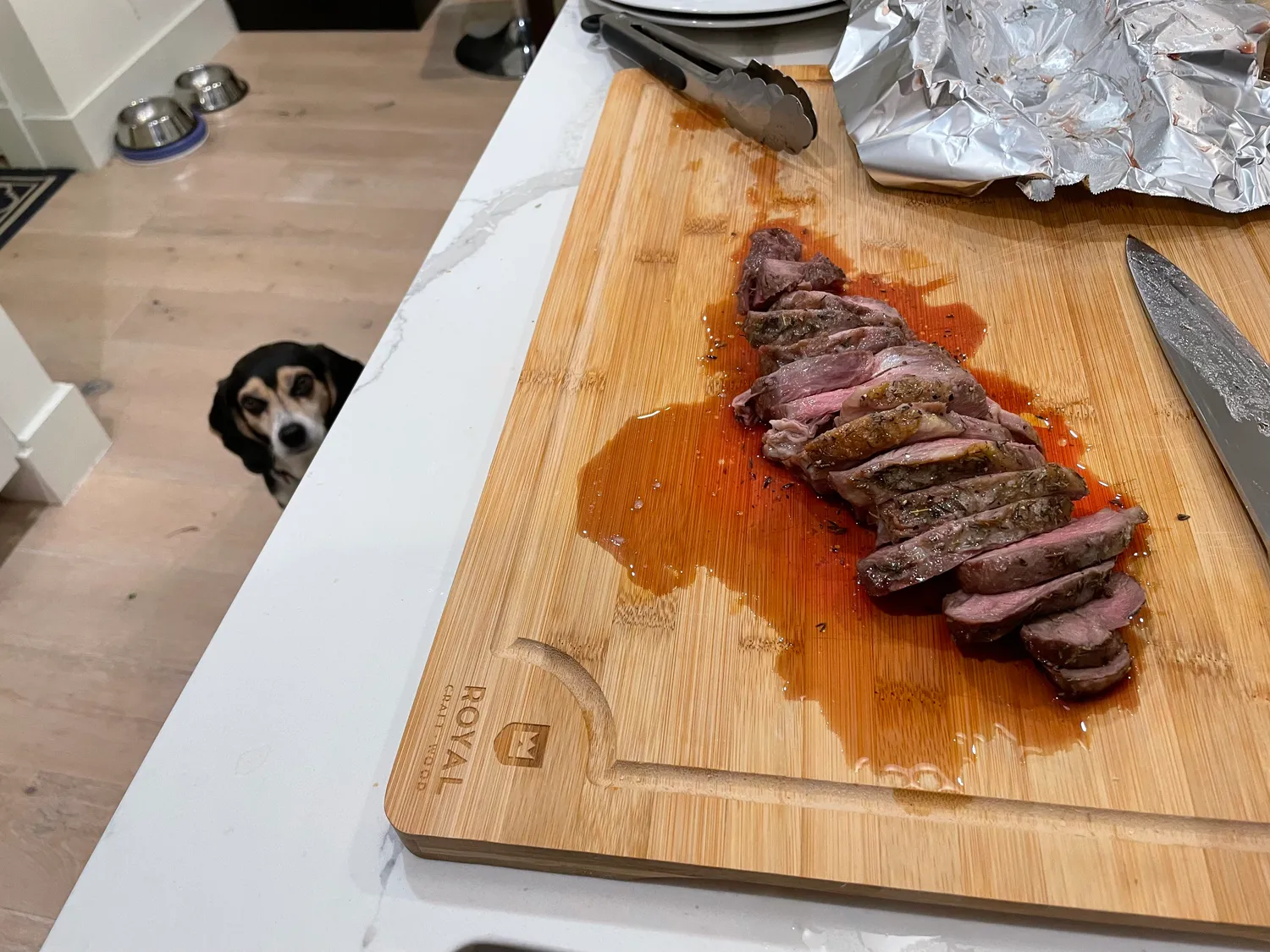
Lamb is so good. I’m using the recipe from Essentials of French Cuisine while keeping an eye on The Mediterranean Dish.
It’s rubbed in salt, garlic, pepper, thyme, and olive oil. The hard part is timing. Our great grandparents practiced with their ovens and standard cuts until they knew the exact timings and sensory signals. We get to cheat: buy a meat thermometer. It’s particularly helpful when your recipe calls for a larger cut, bone-in cut, or any other variations from what you’ve actually bought.
I was aiming for medium temp, so I pulled it out to rest at 128°F so it landed between 130-135°F after resting.
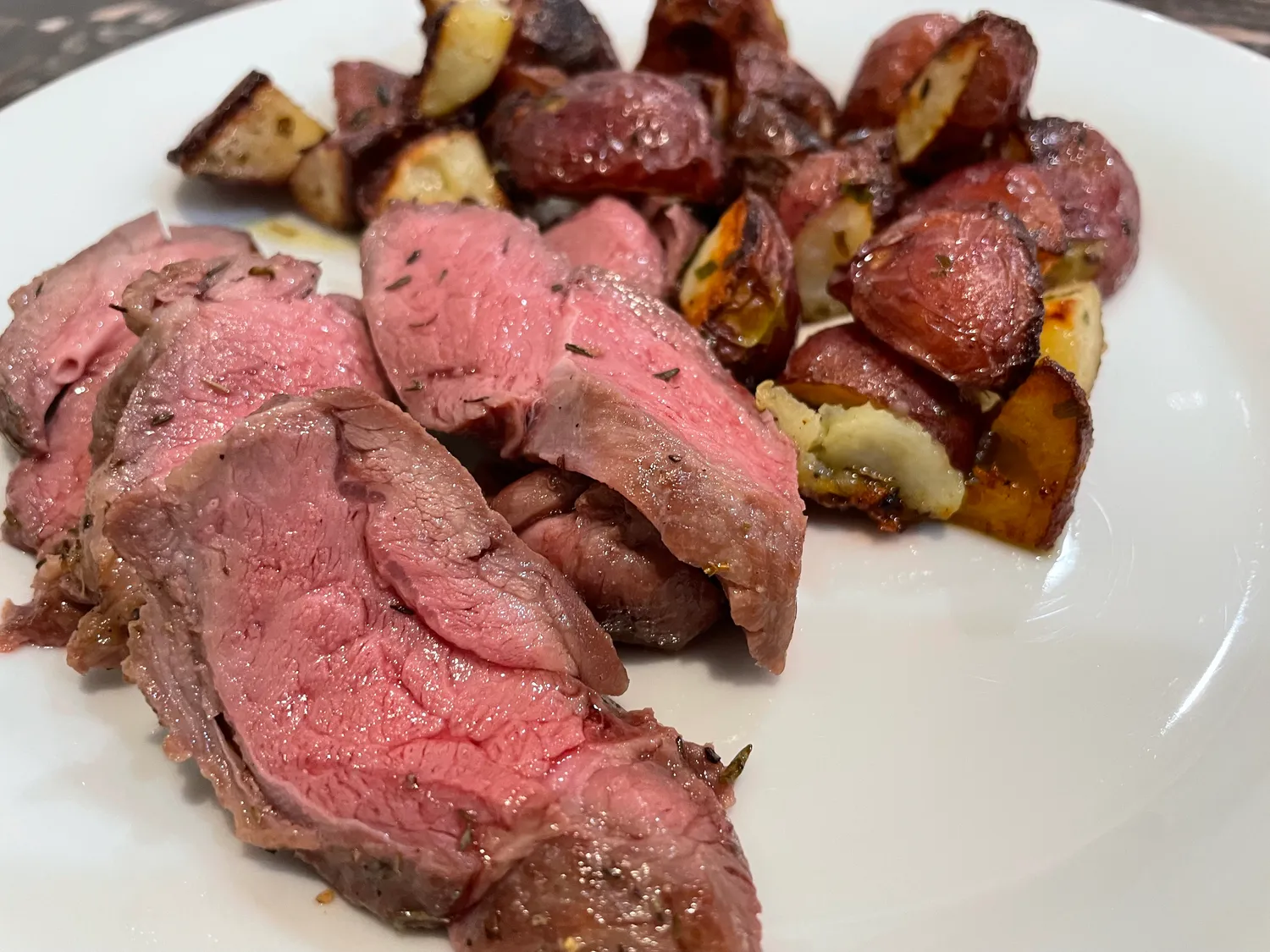
All the roasted potatoes pictured are some combination of thyme, rosemary, garlic, salt, spread out on a baking sheet.
Crepes
We did a class in St. Louis over Thanksgiving. It was awesome. When I got home I tried making one with gruyere. Then I ran out of French cheeses and used pre-shredded Mexican cheese blends like its quesadilla, which I’m told is considered a war crime in Lyon.
Apparently you don’t need any special equipment. I’ve been doing them in a regular nonstick pan with a silicon spatulta and a wooden spoon to patch any holes.
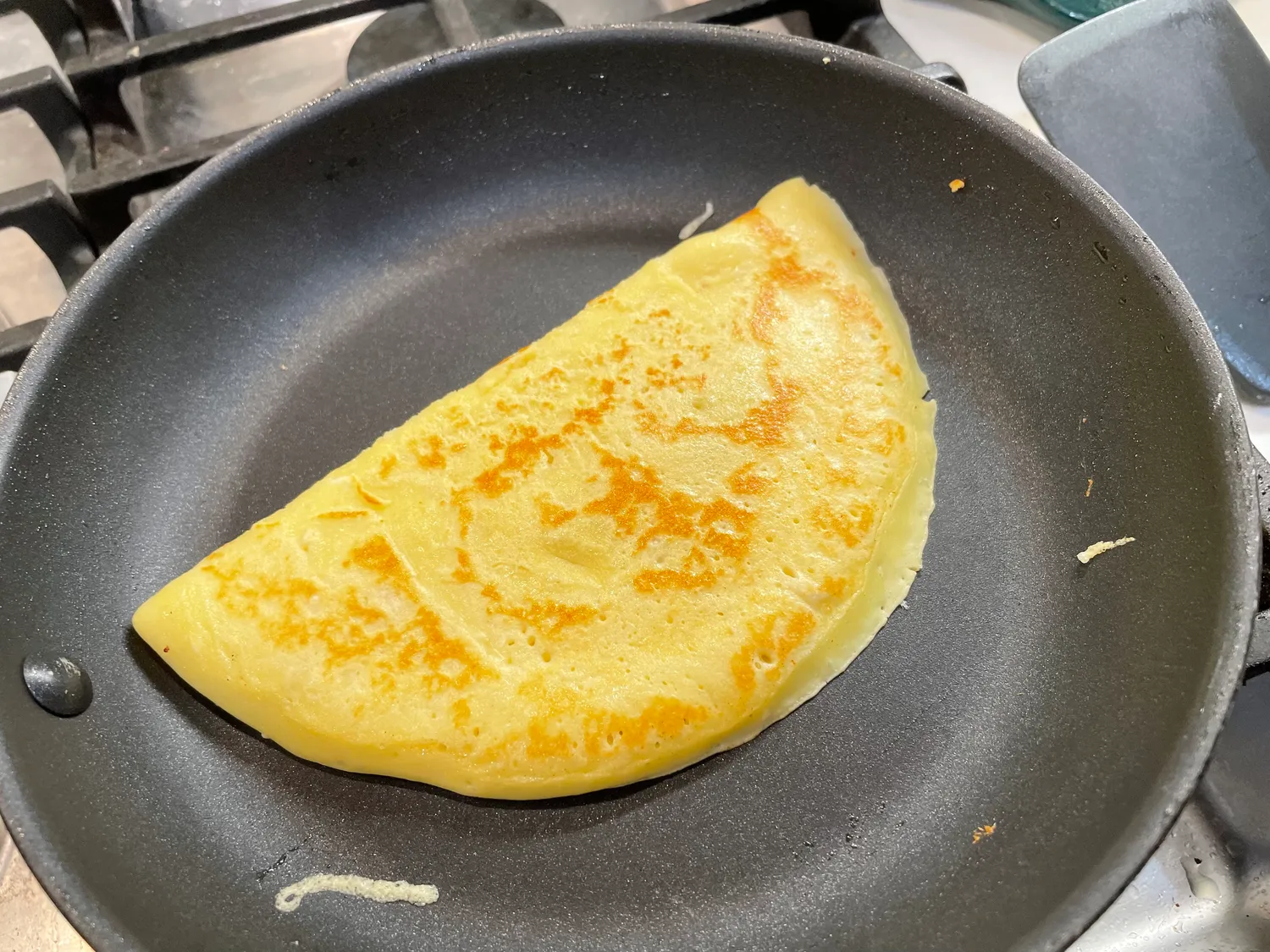
Beef Bourginion
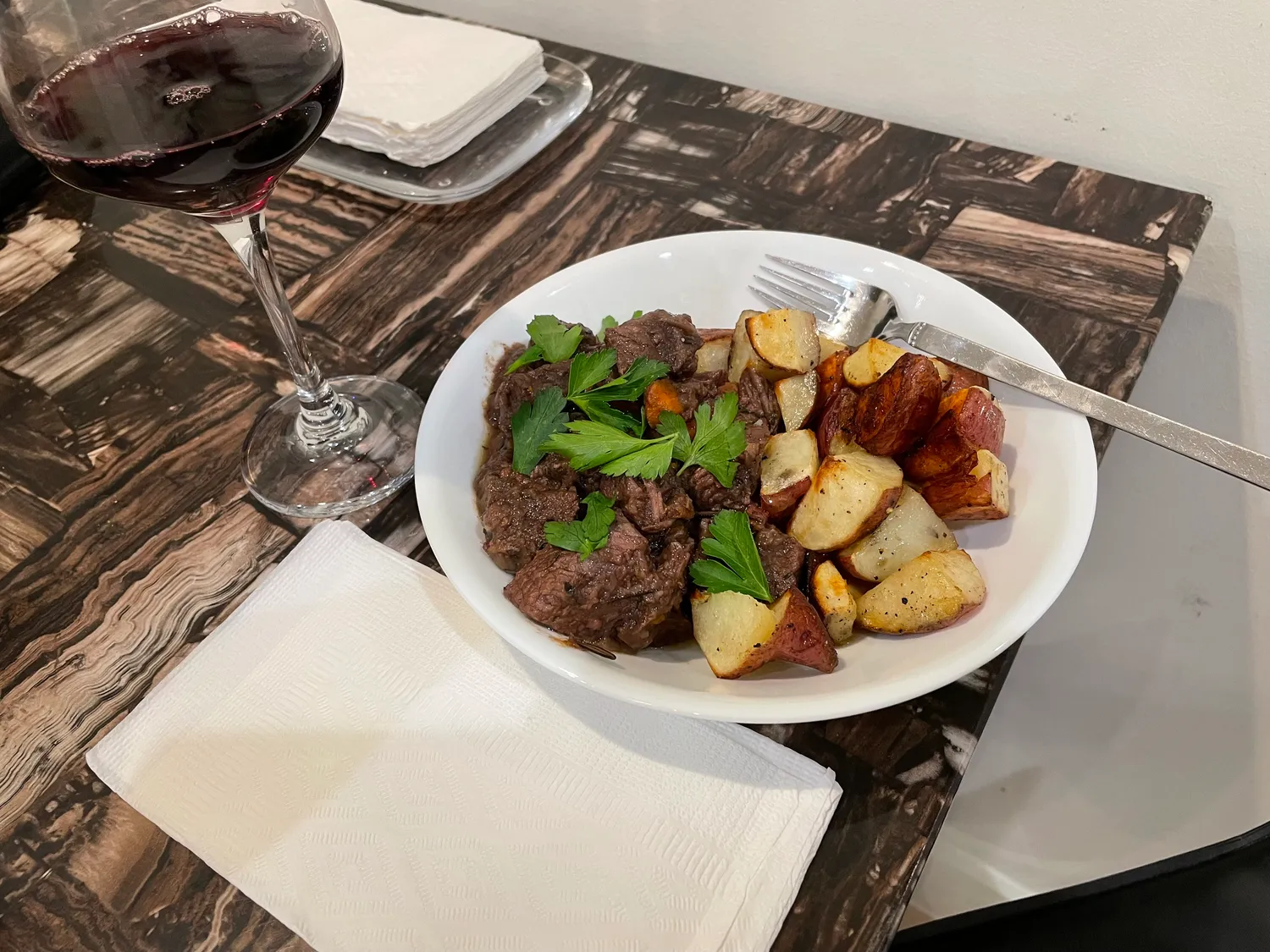
This is it. The classic. The big one.
And I looked at the recipe and went “wait, it’s French brisket?” And… isn’t it? You take a tough cut of meat and braise with vegetables until it falls apart and the liquid reduces to a sauce. The
Once again I’m using the Essentials of French Cuisine for the recipe, but half beef broth and half wine because, well, the original recipe calls for a whole bottom and obviously we want to drink the other half.
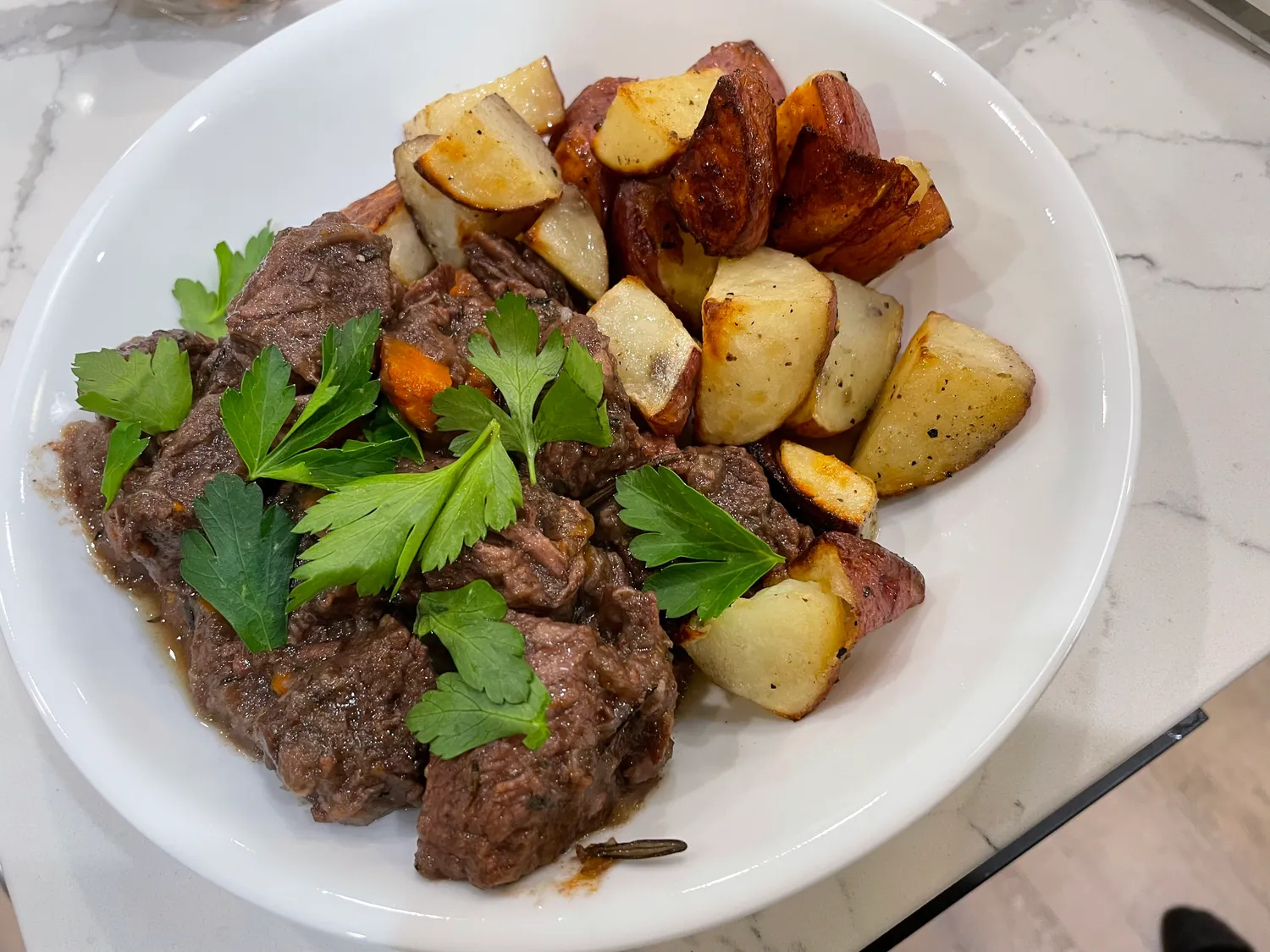
The scent filled the house, the dog sat on the couch twitching his nose, and as we reached the final taste test I was astounded by how good this is.
Some weeks later I booked a reservation at Les Diplomat, a DC institution that I still hadn’t been to despite living here 10 years. I ordered this. They served it on a bed of buttery mashed potatoes.
Was theirs more polished than mine? Yes. My sauce was less even, ratios less exact, and I have stray rosemary leaves scattered about. But fundamentally, mine was essentialy as good, if much more rustic.
And this is what I’ve come to appreciate about peasant food. The professionals can be more consistent, but this was designed to work at home.
Flank Steak
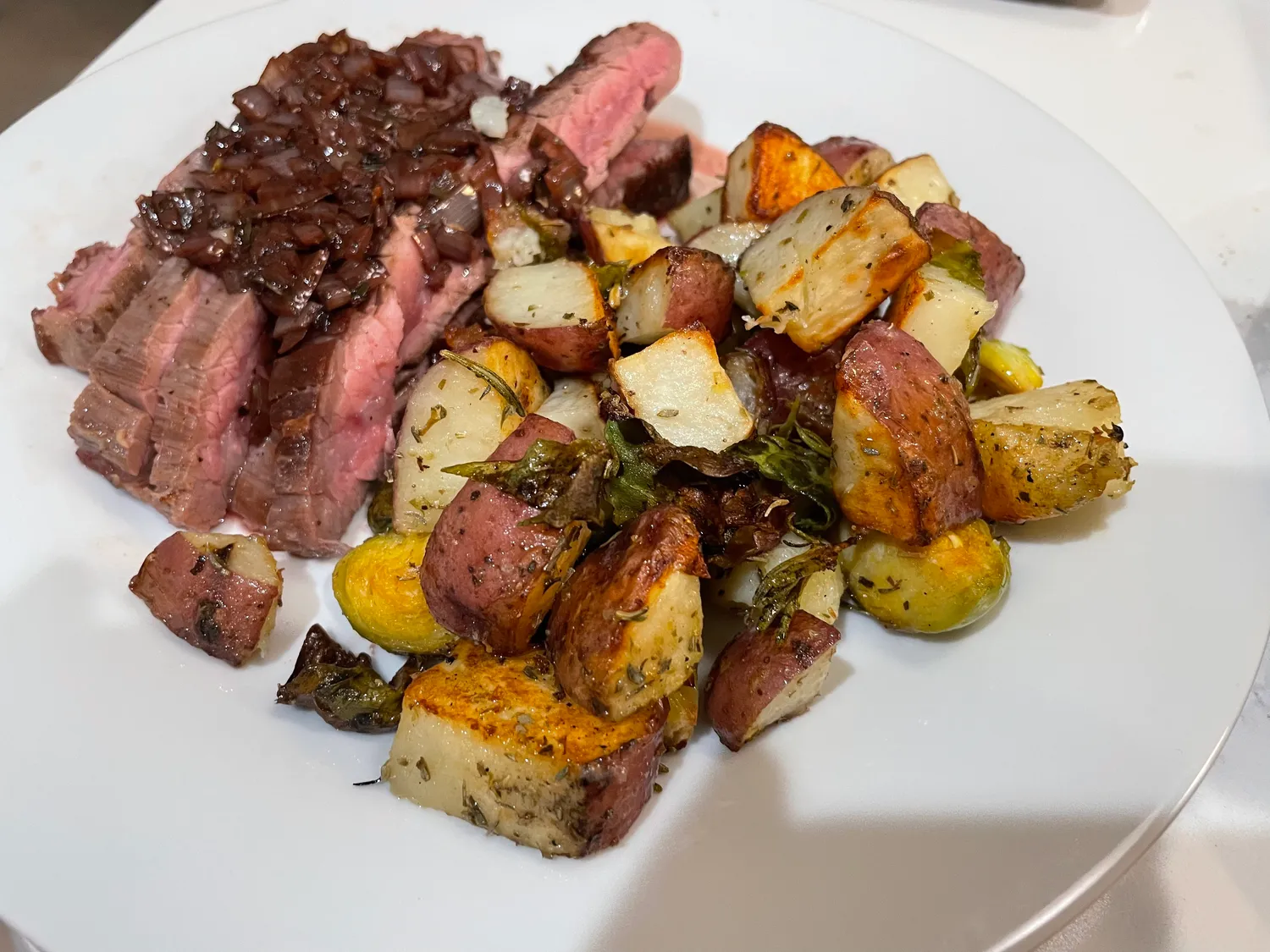
I didn’t set out to make something French, I just picked up flank steak and starting flipping through my books to decide what to do with it.
But the recipe itself comes from a random blog called Gourmet Frog.
It’s a straightforward pan-fry in butter that picks up the residual brown bits and a glass of wine for a thick shallot sauce.
The only way to make this better is if I had space for a grill…
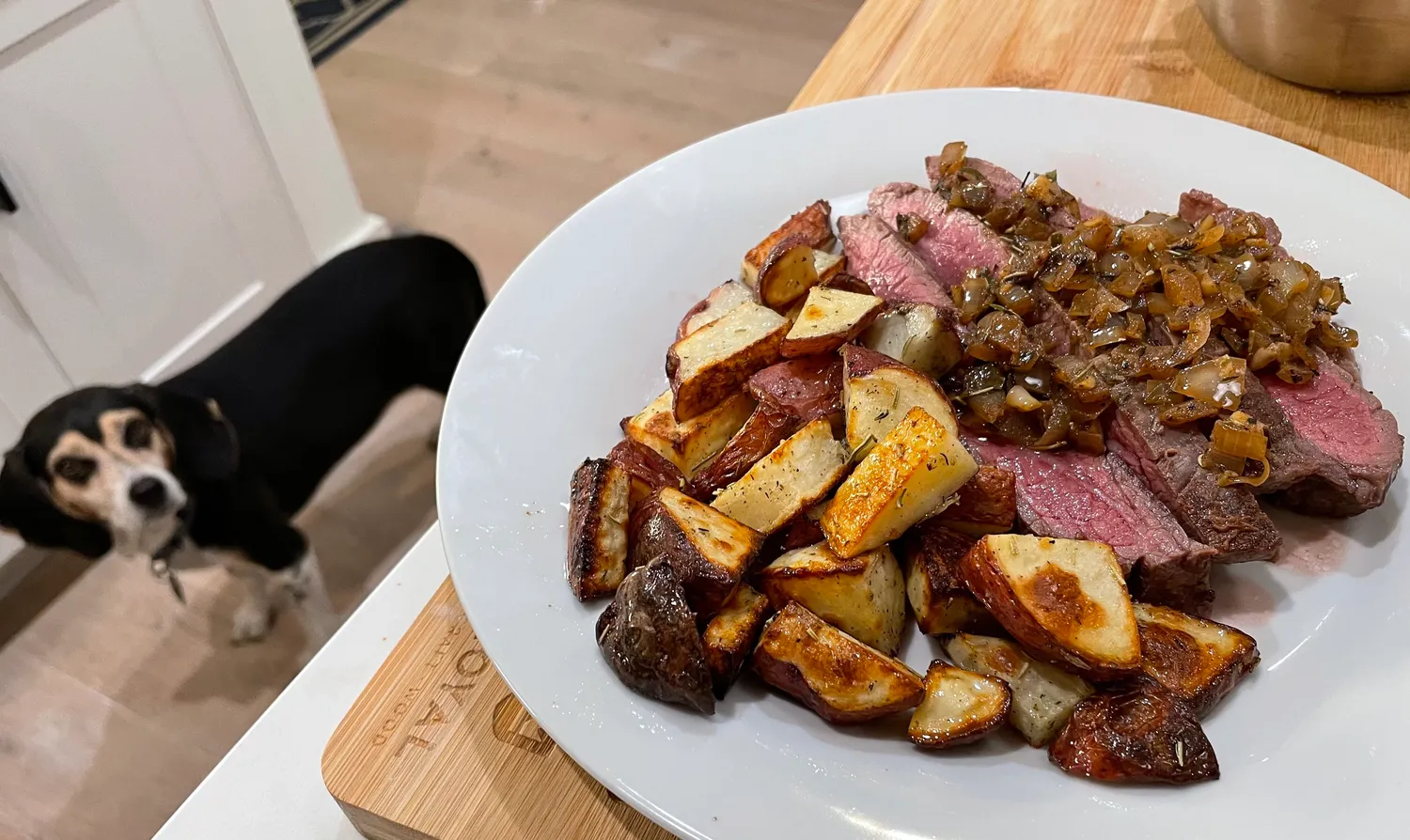
Some modifications from my second attempt:
- Replaced the shallot (which I don’t always have) with a small yellow onion (which I always have).
- I didn’t want to open a bottle of wine (yes, everything is fine, thanks for asking), so I cooked the onion sauce in a mix of vegetable broth and red wine vinegar. It’s slightly different, of course, but the result is still solid.
Classic Whole Roast Chicken
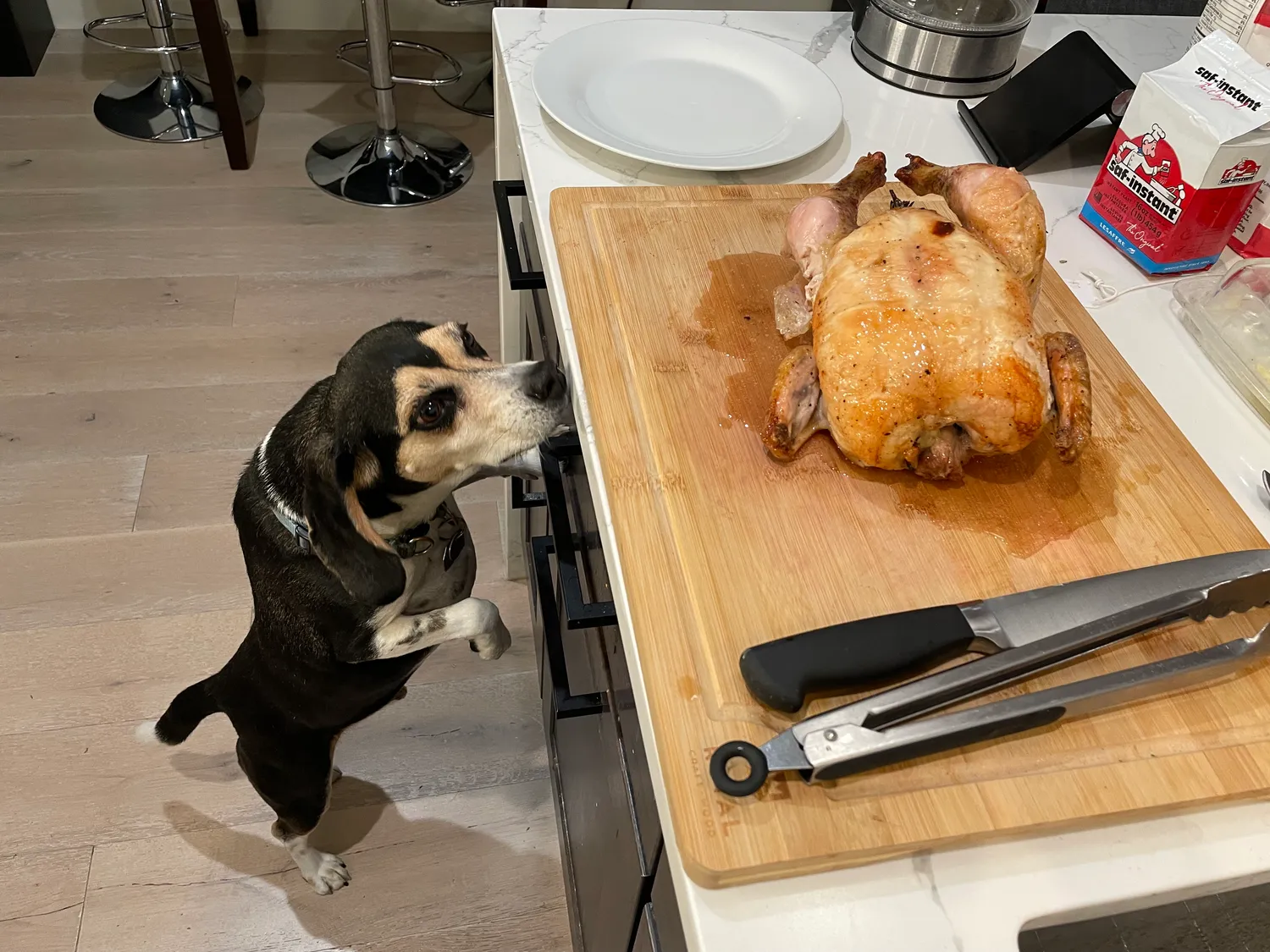
The first time we attempted this was a few years back when a friend offloaded half his freezer to us before he left the country. It turned out okay. But as we’ve gotten so much better at cooking, I started thinking about trying again.
After all, this is supposed to be excellent.
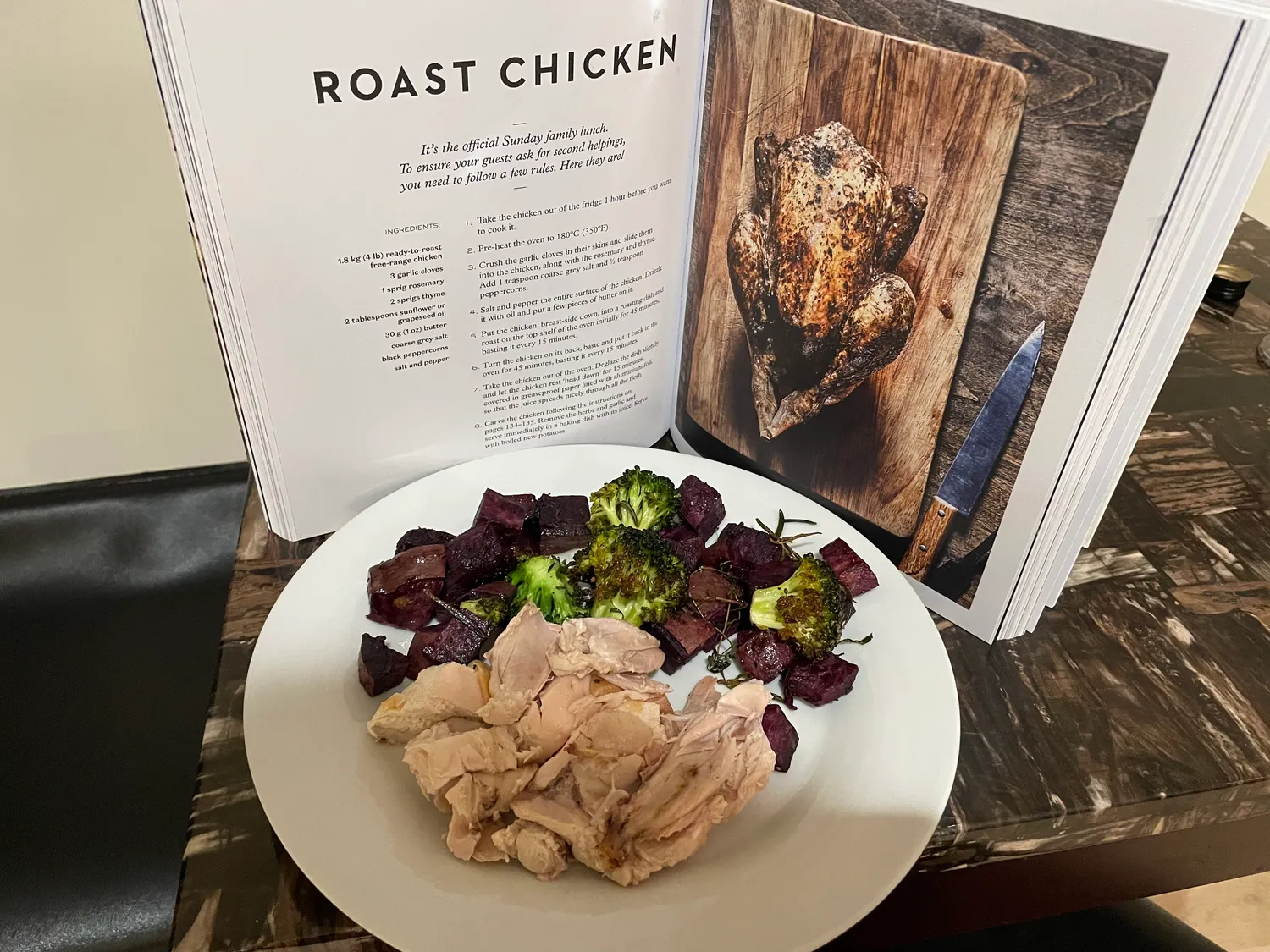
I tried this twice. First with the Essentials of French Cuisine recipe—rubbed in herbs and lemon in the cavity. It tasted like chicken. It was fine. So I tried a second time with a suggestion from the Zahav Home spice profiles. Again, it tasted like chicken. It was fine.
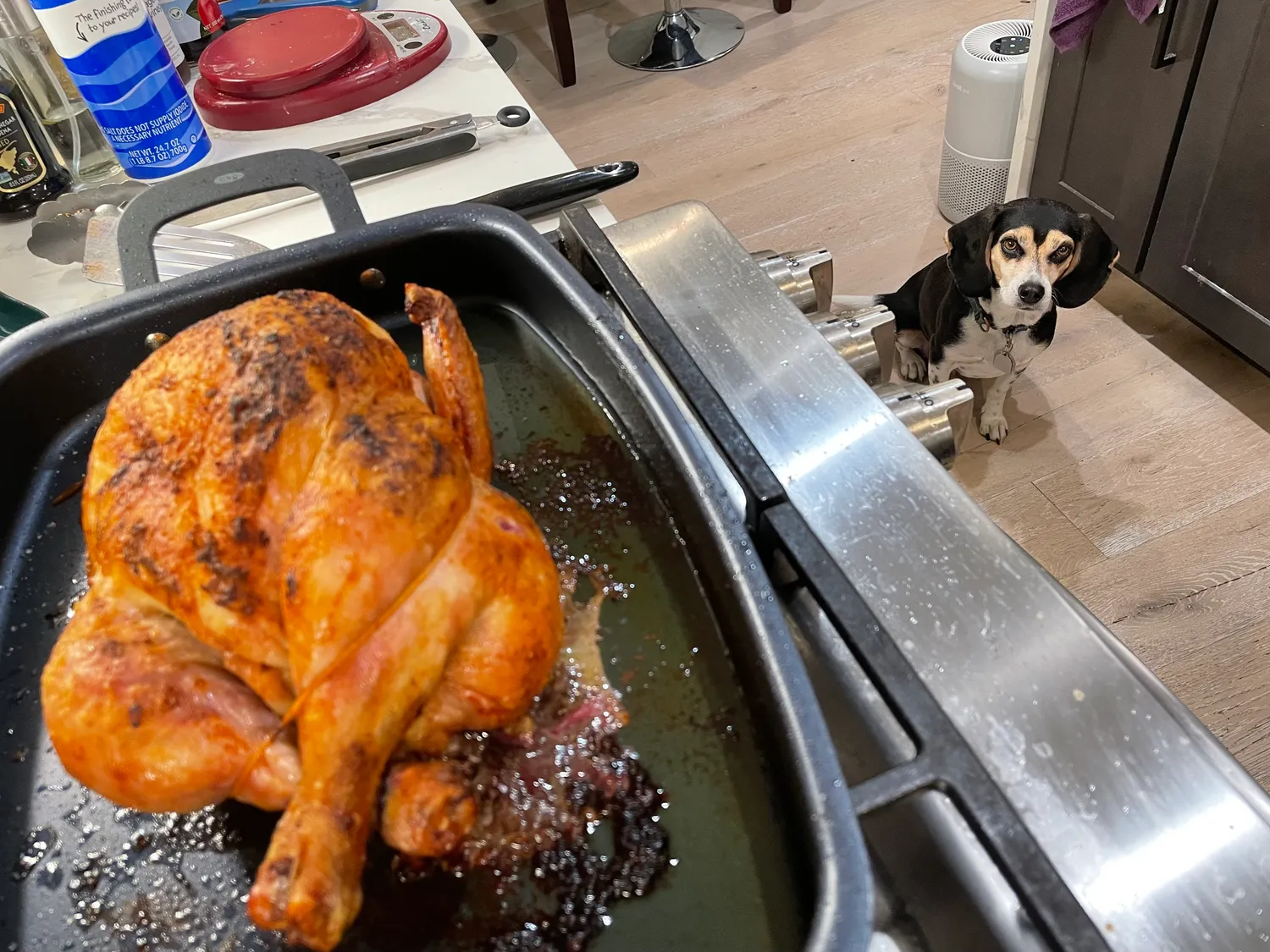
Ultimately, this is a lot of work and it’s not amazing.
There could be a few things going on here.
These are not heritage birds. It’s plausible that turn of the century chicken was fucking delicious, and the rapid-grown industrial bird of the 21st century grocery store doesn’t stand on it’s own. All these cookbook authors do love their local butchers and specialty shops.
Or perhaps its nostalgia. If this was your special occassion food growing up, the association is with the memory rather than the actual result.
I’ve also been told that I just need to marinade it for longer. Much, much longer. That would make sense, none of the seasoning was noticeable when we actually tried it.
I’m unlikely to revisit this any time soon.
The Beagle, on the other hand, had his mind blown. He got quite a few of the leftovers.
Steak Frites
I just wanted to know if I could.
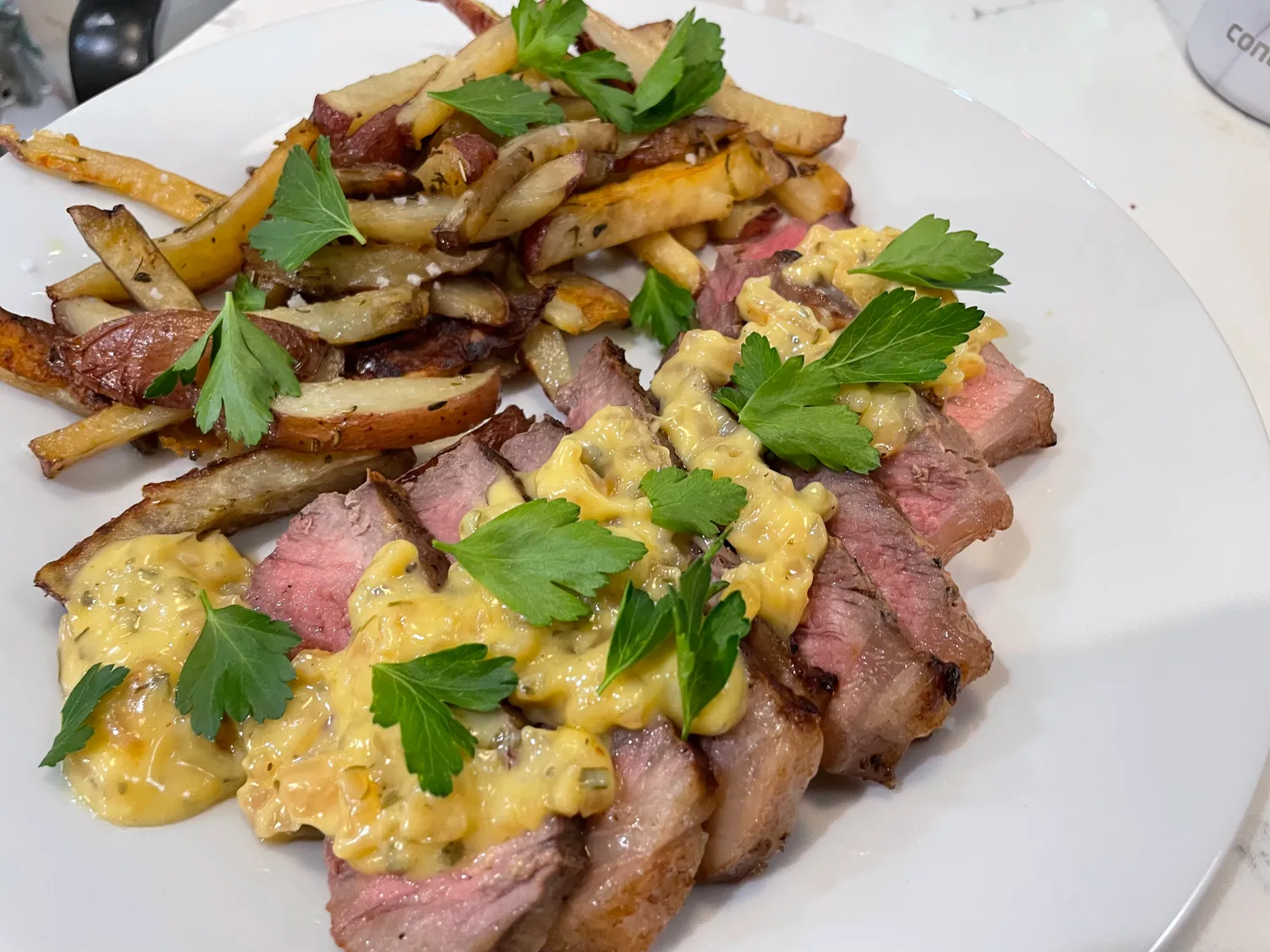
There’s no single source for this one. I’m using a mix of Anthony Bourdain’s Les Halles and some assorted sites and youtube approaches.
Additional Research
The steak is a straightforward enough reverse sear, rest and slice. You’ve got a meat thermometer, right? I did 275°F in the oven until the temp read 105°F, finshed stovetop, and it will reach the 5-10° while resting. I was aiming for the low-end of medium and overshot it.
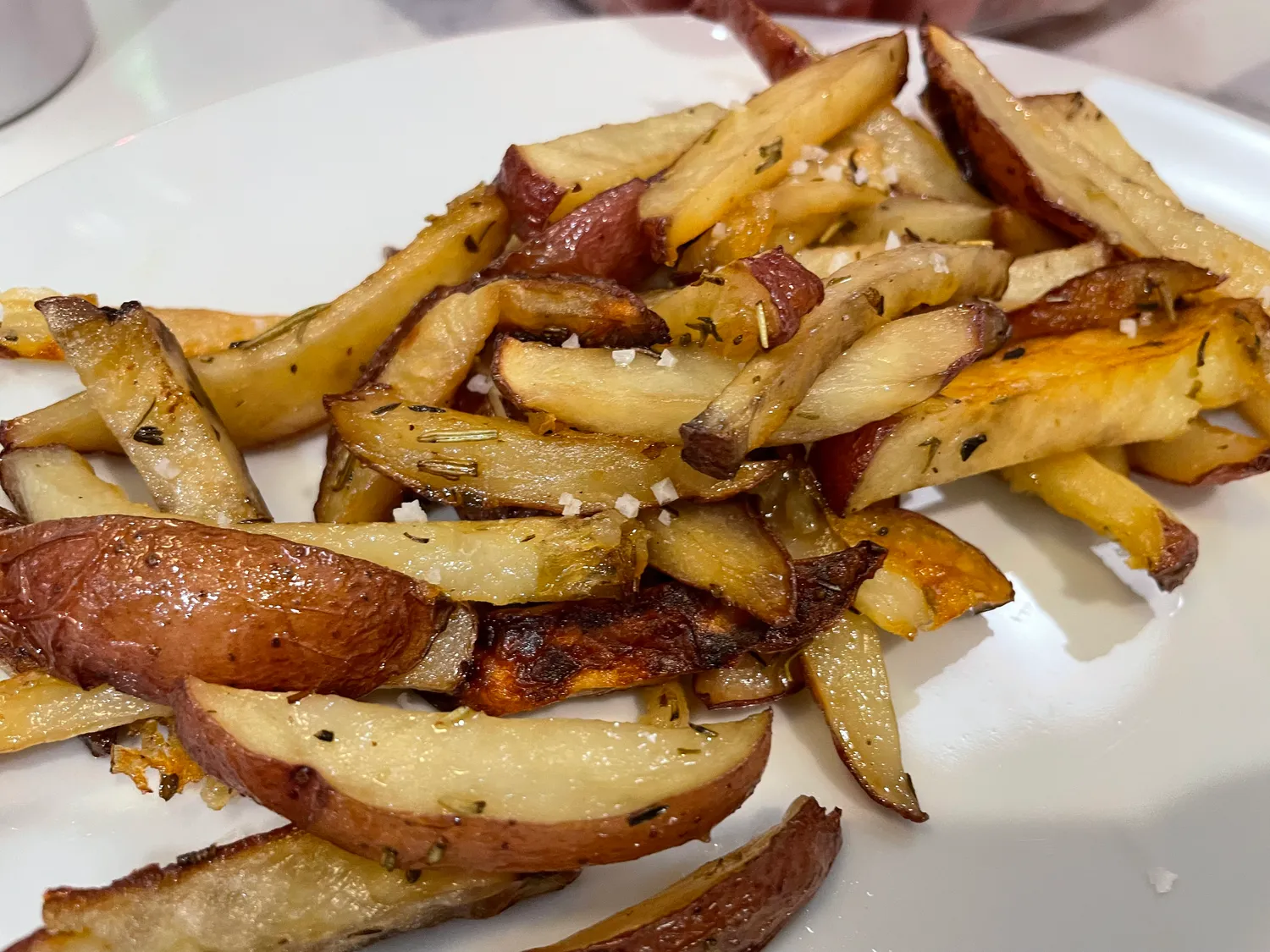
For the “frites”, I was aiming to get as close as possible while still being a roasted potato. I won’t deep fry at home—for the mess, health reasons, and general impracticality. But you can create a similar experience with a convection roast. The potatoes were cut to fry-ish shapes, covered in oil, salt, pepper, thyme, rosemary, spread across a giant baking sheet and roasted until crispy.
It feels less like an imitation than a variation, and a vast improvement on the soggy abomination from the last time we got burgers as carryout.
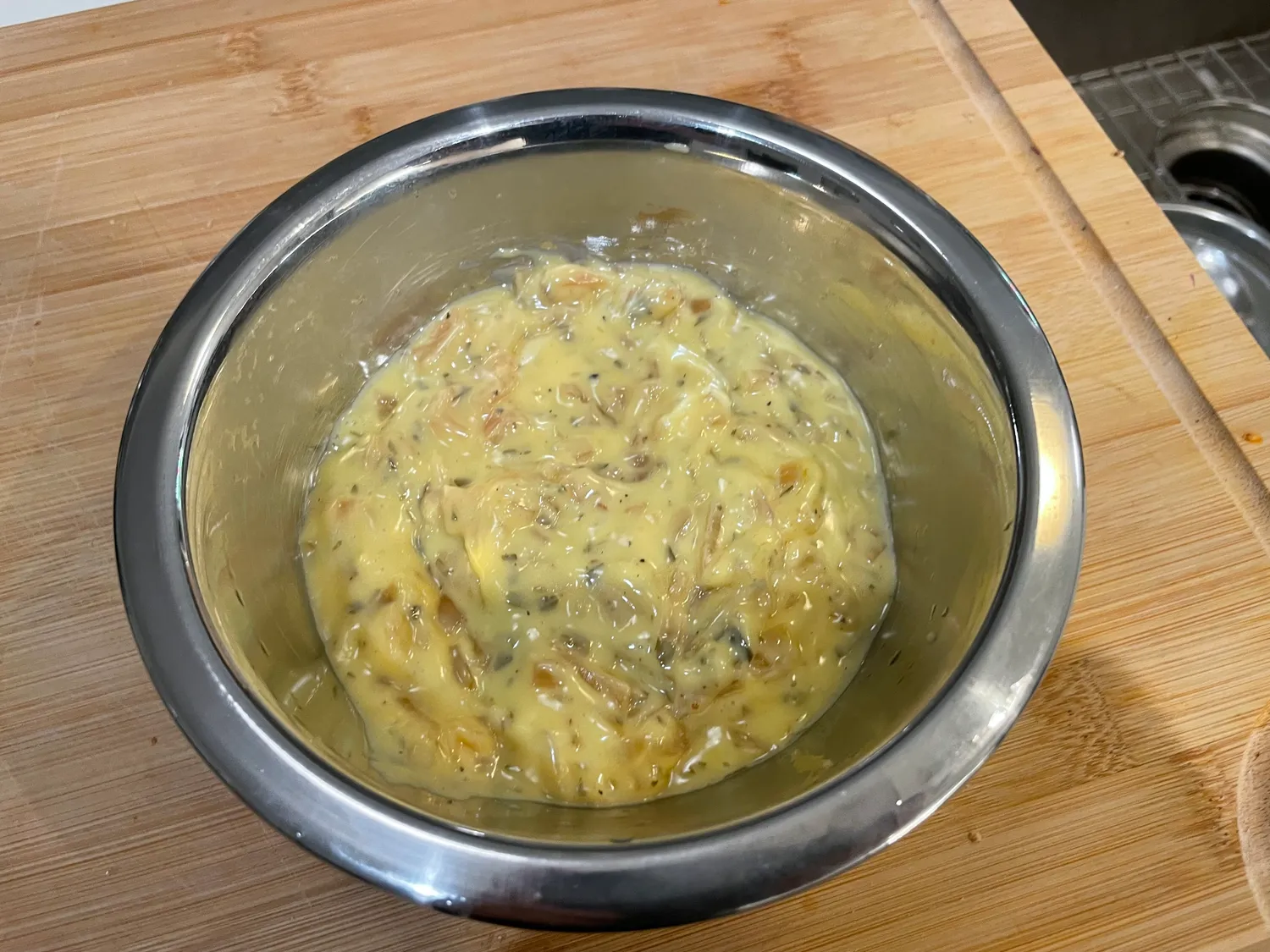
Bernaise is notoriously hard. According to Les Halles, you will fuck it up. The sauce wants to break. The sauce wants to punish you. The French do this because it’s hard.
So I decided I would cheat. Rather than rely on my own stirring, I whip the eggs and butter together in a blender, then add it to the pan with the scallons and sherry vinegar. I overdid the acid slightly but the sauce didn’t break.
In theory the acid and low heat is supposed to “cook” the egg to a safe-enough temperature similar to how ceviche is “cooked.” Do I believe this? No. Not even a little. But we didn’t get salmonella (which is rare anyway) or bird flu (which might be rare or the US government might have just fired everyone who reports cases) so I’ll take the win.
Verdict: quite good. I overcooked the steak slightly because I forgot to account the temperate rise while it rests. The sauce had a little too much acid, but not bad for attempt 1. Also, we didn’t get bird flu! So that’s a win.
I’ll make it again as soon as I manage to forget how much butter was involved in that sauce.
Au revoir!